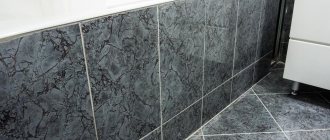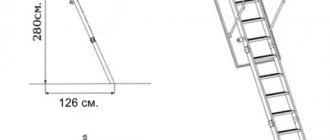Rationally located and trouble-free plumbing in the bathroom is an important component of the comfort of the owners. Its flawless connection is a guarantee of good relations with neighbors from the apartment below. To achieve the ideal, you need professional installation, the price of which not everyone agrees with. But there is an opportunity to significantly reduce the cost of replacing old plumbing. If you install the bath yourself, you only have to pay for consumables. However, an excellent result can only be achieved if you follow the technological rules that we are ready to share with you.
Read a detailed description of the process of installing and connecting plumbing fixtures made of cast iron, acrylic, and steel. We thoroughly outline the nuances of connecting to the sewerage system.
Is it possible to install a bathtub yourself?
Installing a DIY bathtub is a doable task, but it will require time and assistance from at least one person, especially when installing a cast iron model.
Before installation, read the instructions for installing the bathtub itself and supplying water and wastewater to it.
The technology for installing a corner bathtub and a flat bowl is no different. The main criterion is the material and size of the bathroom.
Important! For a small area, a corner design is an excellent option that will allow you to rationally highlight the entire space.
Useful tips
Several other factors may influence your final decision about whether you need your bathtub installed before or after tiling. It happens that the apartment is still being renovated, but the bathroom needs to be used. Here it would be preferable to place it before laying the tiles, so that you can simply wash yourself.
If you have a limited budget that you are willing to allocate for renovations, the best option would be to tile an already installed bathtub, since this way you can save on the number of tiles. After all, it is not necessary to put it behind the bathtub itself. If you decide to use fitting and marking before starting work, be sure to take into account the characteristics of the material from which your bathtub is made. If a cast iron model does not react in any way to the amount of water in it, then acrylic and steel products can change shape. Therefore, when trying on a bathtub and marking the wall, fill an acrylic or steel container with water. Water should remain in the bath even when sealing cracks with sealant.
Preparation
This process is very important for proper installation of the bathtub.
Make sure that all necessary tools are available when assembling the bathtub itself and attaching it to engineering systems.
In addition to preparing your tools, do the following:
Install before laying tiles
This method consists of initially placing the bath on the floor and firmly fixing it. Next, level the bath using a level. Later they begin tiling. Having chosen this method, it is important to understand that the tiles in the bathroom are laid from the edge of the bathtub, and not from the floor. A small indentation is made from the edge (a few millimeters are enough), and the resulting gap after completing the main work will need to be sealed with sealant or other moisture-resistant material. The tiles will extend slightly over the edge of the bathtub, and from the outside it will look as if the plumbing is connected to the wall.
Slide and attach the bathtub
Cast iron bath
Attaches to legs. There is nothing complicated about the installation.
Installing an acrylic bathtub on a production frame
The assembly technique for an acrylic bathtub is different from a cast iron one. To install it, you will definitely need a frame that will bear all the loads during operation.
When purchasing, select additional equipment for installation:
- Parts for attaching the bathtub to the wall
- Sewer connection kit
- Decorative panels
In this case, the entire installation process will be relatively quick and simple. Carefully consider the installation of the bathtub and the frame assembly diagram included in the instructions.
Instructions for installing a bathtub with a finished frame:
Installing an acrylic bathtub on a frame
Own frame technology will require more time, effort and consumables. It is used when parts of the installation are missing, as well as when the declared drain height does not correspond to the height of the tank.
Important! Installation of a steel bathtub follows the same principle.
We carry out work according to the following scheme:
What are the differences between products made of cast iron, steel and acrylic?
If the repair sequence is correctly followed, it is possible to extend the period of comfortable use of the bathroom. It is very important during the work to pay enough attention to the wiring of sewerage and electricity; usually, to resolve such issues, they turn to specialists. Today, the option when plumbing is installed after finishing the walls and flooring is not uncommon. Most often, an old bathtub is replaced with a new one: steel, cast iron or acrylic. As a rule, owners rarely purchase a device of the same type that was used before repair; this fact is explained by the search for more convenient solutions.
Acrylic bathtubs have an attractive design, but are fragile
When the shower is turned on and water is running, a steel product creates a lot of noise and quickly heats up and cools down. The walls of a cast iron bath take a long time to heat up and retain heat for a long time; it is very reliable, but its weight does not allow the product to be moved to the installation area without any problems. An acrylic product retains heat for a relatively long time, has an attractive design, is easy to install, but is sensitive to household chemicals and is fragile.
- Step-by-step instructions for laying ceramic tiles in the bathroom
- Installing a steel bathtub with legs - step-by-step master class
- Boar tiles for the bathroom and kitchen - secrets of laying unusual tiles
Grounding
This procedure is required when installing a steel and cast iron bathtub.
It is better to entrust the grounding to a specialist, but if you decide to do all the work yourself, then take into account the nuances of the technology:
Material supplied by our company
We make sure that our customers do not waste their precious time searching for rough material in stores, so we will deliver it directly to your site. To expand your understanding, we’ll tell you a secret - any renovation consists not only of tiles and plumbing, as many believe. In separate and combined bathrooms, at the first stage, rough finishing occurs, where bulk materials are used in the form of dry mixtures, pipeline communications, waterproofing and primer liquids, sealants, profiles for drywall, blocks and other necessary items included in the estimate. But what we cannot do for you is to buy what lies on the surface - goods in the form of ceramics, porcelain stoneware, sinks, toilets, faucets, bathtubs, ceilings, doors and finishing materials, which remain the prerogative of our clients. Everyone’s tastes are different, but we will definitely give valuable advice on manufacturers and stores where you can buy all this cheaper.
Installing a screen under the bath
Installing a screen will be a great solution to make your bathroom attractive. The easiest way is to install a ready-made kit.
However, you can make the screen yourself by simply choosing the material to your liking and a more suitable design.
The most popular screen layout options:
When forming, follow the following recommendations:
- Take the load off the screen.
- Fill the holes thoroughly and firmly
- Separate the floor under the bathtub from the rest of the floor in the room to prevent water from getting into it.
- Install a small opening, allow access to the sewer system and other installation systems running under the bathtub.
- Carefully measure all parts and ensure the accuracy of the parameters
- Attach everything to a previously created frame or custom panel.
- When making a frame from chipboard, plywood or plastic, cut a 2 x 5 cm or 2 * 10 cm ventilation hole in the direction opposite to the technical hole.
Tiles for facing
Installation under tiles is the optimal solution to the question of how to make a bathtub stable. This material is more hygienic and practical. To tile the bathtub itself, you cannot do without installing a screen. Moreover, you can surround any bathtub with tiles. Such cladding will be very harmonious in the interior. And, most importantly, it has maximum stability due to its special connection with the floor. The screen under the tiles can be built from brick or cement.
Finishing
Wall tiles are the last stage in finishing a bathroom. Do this only after the bathtub and other plumbing fixtures are securely fastened. No matter what housing material you choose, be sure to allow easy access to pipes and connections.
The bathtub is installed in several stages, some of which are general, while others are included depending on the material of the device itself. The installation process itself is not difficult, but care should be taken when working with small parts. The main problem is connecting the siphon and other parts.
There are two ways to do this.
- Connect it before installing the bathtub. This is much easier because access to the drain holes is unlimited. And the process itself can be controlled visually. However, you must be very careful during installation to avoid damaging the installed fittings. Due to the fact that the bathtub is a bulky and heavy object, this is problematic.
- Place the bathtub in its place and level it. Only then connect the group of siphons. The complexity of the process is reflected in the fact that the work must be done by touch. It is impossible to see both sides of the bathtub at once. But in return, the plumber has the ability to manipulate the bathroom more freely.
The second option seems more suitable.
When installing a bathtub, plumbers charge 1,500 - 2,500 rubles, and the work does not exceed half an hour. Therefore, we recommend installing the bath yourself.
The works should be divided into two categories. It's one thing if the bathtub is installed in a recently renovated room, and quite another thing if the old bathtub is replaced with a new one .
In the first case, nothing needs to be prepared. Please note that floor tiles, if they cover the entire area of the room, should be applied with adhesive applied in a continuous layer and not in several places. Otherwise, a bathtub filled with water may damage the tiles.
In the second case, you need to check the floor. Pay special attention to the places where the legs of the new bathtub will be located. It is possible that the new legs will be in a different place.
We will separately remind you of the optimal bath height. Previously, experts calculated that it is most beneficial for the average person to raise their leg to enter the bathtub to a maximum height of 60 cm. But now many more models of bathtubs with different overall dimensions have appeared on the market. Therefore, this case should be regulated by one's own preferences.
However, there is one interesting feature you need to know about. If the drainage basin is located 3–5 cm higher than usual, the water flow will be faster. This will no longer allow clogs and deposits to form in the drain fittings. Hair will not remain even after the drainage grate.
If the tiles were not laid under the bathroom, then at this point it is recommended to raise the floor level slightly. Even 1 cm of extra height will be enough.
Preparing the premises for the upcoming installation
If the plumbing is replaced without repairing or removing the tiles, after dismantling the old bathtub, all that remains is to sweep out the debris and inspect the floor for defects. If the legs of a new bathtub get into potholes, it will wobble. Before installation, all irregularities must be removed, damaged tiles replaced, etc.
Before installing the bathtub, you need to prepare the room.
When to cover walls
If the bathtub is being installed at the time of renovation, then it is better to remove the old tiles and replace them with new ones.
When replacing a bathtub coincides with a major renovation, most often both the floor and wall coverings are replaced. In this case, the best option would be to install the cladding after installing and fixing the container. This will allow you to properly seal the gaps between the wall and the edge of the bowl.
If the tile is already in place and its dismantling is not planned, you can carefully remove the bottom row of elements to seal the joint between the wall and the bathtub, and then restore the coating. In a large room, where the bowl is installed in the center of the room, the sequence of work can be arbitrary.
How to prepare the floor
When replacing a screed or constructing a podium for a plumbing product, it is recommended to level the base. The bottom of the bathtub is already made with the necessary slope, so there is no need to tilt it towards the drain yourself.
The bathtub is installed on a finished base.
When installed on a tiled floor without a screen and podium (on decorative legs), all work on finishing the base must be completed before purchasing the bathtub. The container is installed on the finished coating and connected to communications.
When constructing a podium, screen or other base made of brick or concrete, first install and fasten the bathtub, connect it to communications, and then line it with ceramic tiles.
Bathroom installation
Special preparation is required only for an acrylic bathtub. There are three options:
- Legs. A standard solution, but the widely advertised option has several disadvantages. In particular, blind holes must be made in several places in the monolithic package. This increases the tension of the material. Self-tapping screws are screwed into these holes, which also heat up after the bath is filled with hot water. And their coefficient of thermal expansion does not correspond to the same parameter for acrylic paints.
- Frame. Great alternative. Sturdy, reliable frame made of profiled pipe, supported by legs. The integrity of the bathtub body is not compromised. Please note that there are frames for all models of acrylic bathtubs.
- Stand made of bricks or blocks. Cheap options. But a little worse than the frame, because there is no lateral support.
- If the tub is old, try installing an acrylic liner as a final step. You can start this work only after the base is completely installed.
Upon objective examination, there is no alternative to the frame. Depending on the shape of the bathtub, its price ranges from 1800 to 2600 rubles. Supplied unassembled. All components are connected at the bathtub installation site in accordance with the included instructions.
Metal baths made of steel or cast iron do not require special preparation. However, they have one bug that is easy to fix. We mean the high thermal conductivity of the metal. Such baths heat up quickly and just as quickly release heat to the surrounding air. This drawback can be eliminated with the help of 3-4 polyurethane foam rollers. It is applied over the entire outer surface of the metal bath. After polymerization by foam, the cooling rate with water decreases by an order of magnitude. As a bonus, this procedure almost completely absorbs the sound of accumulated water. If this is not important for a cast iron bathtub, then it is important for a steel bathtub.
Bathroom accessories sold separately.
The acrylic bathtub is placed inside the assembled frame and carefully lowered until an audible click is heard. This click means that the bathtub has sat on the frame. Since the frame is prefabricated, it is necessary to adjust the water pipe to the level. For this it is better to use the diagonal method.
IMPORTANT: leveling is carried out only by raising the bottom. Lower the height - you can't .
Selection of plumbing fixtures and fittings
A bathtub is a multifunctional product that can be used for washing, laundry and other needs that require the use of large amounts of water. The container is made of durable materials, a large mass of liquid and an adult. The connections of the fittings are sealed to prevent the possibility of leaks. Modern devices often have hydromassage, etc.
Acrylic bath.
Steel bath.
Cast iron bath.
It is recommended to choose bathroom fixtures based on the type of material. Each of them has its own advantages and disadvantages. Today they produce 3 types of bathtubs:
- Cast iron. Traditional products made from an alloy of carbon and iron coated with enamel. Strong and durable, they come in both standard versions (rectangular, 1.7 x 0.7 m in size) and decorative ones, with an unusually shaped bowl and beautiful “antique” legs, as well as sessile or enlarged (2 m long). The main disadvantage is the heavy weight (120-150 kg).
- Steel. They are characterized by lower weight (up to 50 kg) and wall thickness and, as a result, insufficient noise insulation when drawing water and taking a shower. Such baths retain heat less well, and the water in them cools quickly. It is better to install a steel container on a monolithic base so that the bottom does not deform.
- Acrylic. the material includes the advantages of both metal types: it does not make noise when water falls on the surface, it is light and durable, and retains heat well. Acrylic bathtubs are cast in the form of large-capacity corner bowls and in standard versions. The disadvantage of acrylic compared to metal is its low mechanical strength. If handled carelessly or used by people with heavy weight, the walls may crack and leak. But a lightweight container is easy to replace, and its cost is low (depending on complexity and configuration).
Connecting drain valves
The assembled group of siphons must be secured in three places:
- Drainer;
- Overflow;
- Sewage pipe.
First install the fittings into the drain hole. Fastening is carried out with a screw through the drainage grid. The seal is located on the drain itself, has a special shape and provides sealing on both sides at once. TIP: Apply a small amount of silicone sealant between the gasket and the tub body , but do not completely tighten the screw.
Then, by adjusting the height of the corrugated pipe, flow is ensured. Here the seal is installed on the outside of the bathtub. It has a conical shape, and the “tip” is directed “out of the bath”.
Then insert the screw into the drain hole. Stop turning the screw as soon as the plane of the drainage grid begins to bend . Finally, insert into the drain. To make this process easier, lubricate the pipe and sewer system with household soap.
When renovating a bathroom and replacing the plumbing, there must be such a problem as the correct installation of the font, because aspects such as the convenience of water supply and the service life of the entire structure depend on the degree to which this operation is carried out. Correct installation of an acrylic bathtub with your own hands consists of a clear sequence of actions, which include assembling the structure itself, preparing the installation site and the installation itself, as we mentioned earlier.
Preparing for DIY installation
Before installation, it is necessary to perform 2 basic procedures to prepare the room: arrange the base and provide communications. When purchasing a new bathtub, you need to purchase a drainage device for it (it is not included in the product delivery package). The bath siphon must have an overflow device. To make it easier to adjust the product to bowls of different sizes, flexible hoses are now being made to drain excess liquid.
Before installing the bathtub, you must purchase a drainage device.
It is advisable to immediately buy a suitable mixer design and linings for the drainage device. A necessary purchase will be new sewer pipes to replace the old ones to avoid leaks. To install communications, you will need a flexible water supply.
Alignment and connection of plumbing
First, the bathtub must be installed on temporary supports.
Bring the bathtub into the room and install it on temporary supports (bricks, bars), choosing a position so that the bottom tilts slightly towards the drain hole and the edges are horizontal. The planes can be aligned by level. Leave enough space under the bottom to install the siphon. Make marks on the walls and floor, remove the container.
Route the water pipes so that they can be easily connected to the tap with a flexible liner. If the purchased plumbing fixture has functions that require electricity (lighting, etc.), then the wires are enclosed in corrugated plastic hoses.
Before the final installation of the bathtub in the prepared place, a siphon is mounted on its bottom, immediately connecting it to the overflow hole. It is more convenient to secure the mixer after installation.
How to prepare a sewer
When laying a new sewer line from the drain to the main, the pipe is laid at a slope of 3-4° to ensure unhindered outflow of water. Joints must be made in a minimum quantity and carefully sealed. The sewer outlet is located in a place convenient for connection to the siphon.
Installation of an acrylic bathtub. detailed instructions
One of the main positive features of such structures, which distinguishes them from the background of outdated metal models, is their low weight, which allows acrylic bathtubs to be installed separately without the help of specialists. Installing an acrylic bathtub is a relatively difficult process, since this material is very sensitive to mechanical damage from sharp or heavy objects. It is also useless to pull the device for a long time, since a bathtub made of this material has one unpleasant property if stored inappropriately or for a long time: it can change its original shape.
Preparatory work and installation options for acrylic bathtubs
Before installing an acrylic bathtub with your own hands, you need to prepare the place and the bathtub itself for installation, remove all unnecessary items from the bathtub, dismantle old equipment, and prepare the necessary tools and materials for installation work.
Before installing a new acrylic bathtub, you need to do some preparatory work:
- first turn off the water supply to the central tap;
- then dismantle the old bathtub;
- insert a new corrugated pipe into the sewer;
- lubricate the connection between the corrugation and the drain hole with sealant;
- Level the floor of the acrylic bathtub.
Now you can proceed directly to installing your new acrylic bathtub.
Rules and instructions for installing acrylic plumbing products allow one of the methods described above to attach a bathtub to a wall or floor, depending on its type and model. If the kit has a metal frame, it is best to install the font on it and use the included instructions. If special legs are sold with the bathtub, the acrylic bathtub must be attached to the legs as this support was designed specifically for this model, taking into account the areas of greatest stress.
Let's take a closer look at how to install an acrylic bathtub.
Purpose of the screen
It is not necessary to close the free space between the flooring and the bathtub if its outer surface looks attractive. But still, many owners prefer to close this gap, for example, with a special screen. Knowing how to install a screen under a bathtub, you can do everything yourself. You can purchase this accessory in a store, but some home craftsmen prefer homemade options due to their uniqueness and affordability.
Theoretical knowledge of how to install a bathroom with your own hands is not always possible to put into practice. You will need to not only skillfully use the tools, but also the intricacies of the process of installing plumbing products. This is especially true for products made of cast iron, so that they do not injure your legs and arms.
Installing an acrylic bathtub on supporting legs
This is the fastest and easiest installation method that does not require a set of tools or special skills. Installing a clawfoot bathtub is easy if you use the instructions that come with it. If you need to drill into the font as per instructions or during installation, you should do so using a wood drill bit at low speeds. Attaching to the support legs involves screwing the legs to the tub and adjusting them in place.
When the optimal performance is determined, the legs are secured with nuts in the desired position. Sometimes, for greater reliability, the bathtub is screwed to the wall using special plastic or metal hooks, which are pre-rigidly mounted horizontally along the entire perimeter of the bathtub in the wall at the same distance from each other. The hooks are screwed into the wall trim.
Nuances of installing a steel model
There are no particular differences in the process of installing containers made of steel from models made of other materials. It is installed in the same way as with an acrylic product. The algorithm of actions is the same, except for the method of attaching the legs. They are connected to the steel body using bolts, studs and wedges.
If bolts are used for this purpose, they are tightened alternately and gradually. You should not immediately tighten these fasteners too tightly, even if everything seems to be done correctly.
Fine adjustments of the supports may be required, which may not be possible once the bolts are fully secured. As you know, when filling a steel bathtub, the water jet makes a loud noise when it hits the walls. In order to muffle it, pieces of automobile rubber are placed in the gap between the surface of the container and the fastening of the supports.
Installation of an acrylic bathtub on a metal frame
The most reliable and relatively simple way is to strictly follow the instructions for assembling the product. In this case, the acrylic bathtub is installed as follows:
- First, you need to assemble the frame according to the instructions using the long screws included in the kit.
- The product is turned sideways or upside down to fit the frame.
- The frame is then attached to the acrylic tub in the middle of the bottom and the legs are attached to the holder.
- Two supports are attached to the frame in the middle section, two more along the wall and three supports along the outer edge of the type.
- The legs are then set to the same height so that the height of the bath does not exceed 65 cm for safety and ease of use.
- The bathtub is then turned over and the level of the structure is checked to ensure that the bathtub is level.
- The siphon and overflow are then connected.
- Finally, install a decorative screen.
The installed frame usually does not require additional fastenings, but if you do not find it secure, you can strengthen it using the other mounting hooks mentioned above.
Recommendations on how to lay tiles in the bathroom from experts
Tools, materials
- Glue
- Tile
- Primer
- Plastic crosses
- Fugue
- Two containers: for fugue and glue
- Level
- Mixer attachment
- Brush
- Hammer or drill
- Notched spatula
- Rubber spatula
Preparatory work
Before learning how to lay tiles in the bathroom, let's clarify how to prepare the surface.
The most important rule of any high-quality finishing is the complete removal of the old one.
That is, we dismantle the panels, old tiles, wallpaper - everything that was there “before” the renovation. Some craftsmen claim that they can easily lay bathroom tiles on old tile floors. And such actions do take place, however, even here you will have to work a little so that your tiles do not “swell” in about six months.
How to install a bathtub on brick supports?
If a metal frame is not available, an acrylic bathtub can be installed on brick supports. This method is not economical, despite the fact that the structure is especially durable, since it requires a large number of bricks. In addition, the floors are overloaded due to the relatively large weight of the finished support. To reduce construction costs and reduce the load on the floor, it is recommended to install an acrylic bathtub on brick columns.
Installation is performed in the following order:
- Without removing the protective film, the bathtub is brought into the room and installed at the site of future installation, after which the location of the columns is noted.
- Depending on the length of the bathtub, it is necessary to indicate where 2 to 3 columns will be located, where one is located in the middle of the bottom, and the other two are located along the edges of the bend of the bathtub.
- After removing the bathtub, the columns begin to rise in length from 17 to 19 cm, so that the height of the bathtub above the floor does not exceed 60-65 cm.
- The masonry is allowed to dry for 12-24 hours, then a trap is attached to the tub and pressed tightly against the wall for installation on previously made columns.
- Use silicone caulk to fill the gap between the columns and the bottom of the tank.
- The edges of the bathtub are secured to the wall with metal hooks and corners.
Experienced specialists recommend applying polyurethane foam to reduce the thermal conductivity and resonance of the material before installing it on the bottom surface of an acrylic bathtub. Also, the use of polyurethane foam during installation reduces the likelihood of damage to the bottom of the acrylic bathtub by brick supports.
If there are no metal supports for a particular model, installation will be done on a brick site. According to experts, this method is no worse in terms of reliability than the previous version, the only difference is that this method requires more time, although it is a little “messier” in the previous version. Installing an acrylic bathtub on a podium is done using a saw, polyurethane foam, brick, mortar and moisture-resistant plywood.
Worth considering! Nowadays, acrylic bathtubs have a sloped bottom, which speeds up the flow of water into the drain, so there is no need to install the bathtub on a slope during installation.
The most well-known method of fastening acrylic bathtubs is the combined method, in which the installation is carried out on a metal frame made of aluminum profile, and ordinary brick is used to prevent bending and deformation of the bottom.
Worth a mention! Care should be taken when working with sharp and heavy objects, as an accidentally dropped tool can easily create a hole in the bathroom, destroying it. It is better to take precautions by covering the bathtub with thick paper or thick film.
Before installing acrylic bathtubs, everything must be designed so that during installation it lies exactly on the sides of the previously installed profile, and the bottom is in slight contact with the masonry. In this situation, fastening to the wall is done using a sealant that is applied to the profile, and at the same time a sealant is used that prevents water from leaking.
Thus, the manufacture of the frame can be considered complete, but you can create a protective screen from the same metal profile. This screen will hide the inside and can provide additional protection to the outside, as well as create a special hatch for repair and maintenance of the siphon.
Installing a bathroom yourself is a responsible, but relatively uncomplicated event. If you really want to handle the installation work, you can do it yourself, avoiding the services of third-party specialists and significantly saving money.
How to choose the right option
Sometimes there is no alternative. For example, when the selected model is placed flush against the wall, installing a bathroom after laying the tiles is technically impossible.
If you have a large bathroom space, the tank can be fixed in the middle or to the side if there is a suitable plumbing connection.
To carry out facing work yourself, you need to have a clean space so that plumbing does not interfere with clearly measuring horizontal-vertical levels.
Not wanting to waste time, effort and additional materials for laying tiles under the bathroom, you need to choose a stationary tank option or preliminary measurement and removal of the tank.
Much depends on the aesthetic side of the issue. Complex geometric shapes, diversity of tiles in size and color require a high level of skill when there is plumbing in the room, which complicates measurements. But the seams between the tiles and the toilet with bathtub will be much narrower due to the more visual cutting method.
Depending on the size of the room
Large bathrooms are a rarity in apartment buildings. But in private housing, owners can afford to choose both installation variations, tank dimensions, and the number of plumbing units to fill the room. If the bathtub will be placed at a distance from the wall, care must be taken to securely fix it to the floor. There are also several options here: with legs or tiling. In the first case, the installation can be carried out after laying the tiles, but in the second, it is more expedient to carry out the cladding immediately and in one piece.
You can install miniature bathtubs in small rooms, then the result will not suffer from the way the work is performed.
Popular shower stalls for small bathrooms are best installed in front of the cladding, paying attention to the height of the vertical partitions.
From the type of bath
The material of the bathtub also plays a significant role:
- the weight of a cast-iron bathtub is unlikely to allow it to be carried in without causing damage to the laid tiles (chips and cracks form even from minor impacts);
- a steel bathtub is often tiled, which means tiling work must be done after installing the tank;
- The specificity of the acrylic bathtub fasteners and its slight flexibility require measurements to be taken before laying the tiles.
Non-standard or high-tech plumbing requires first installation, and then aesthetic design.
From the budget
Hydro-, noise- and heat-insulating functions are better performed by a bathtub with full lining of the walls and floor. But it’s cheaper to leave the space under and behind the bathtub without tiling. This will not disrupt the aesthetics of the room.











